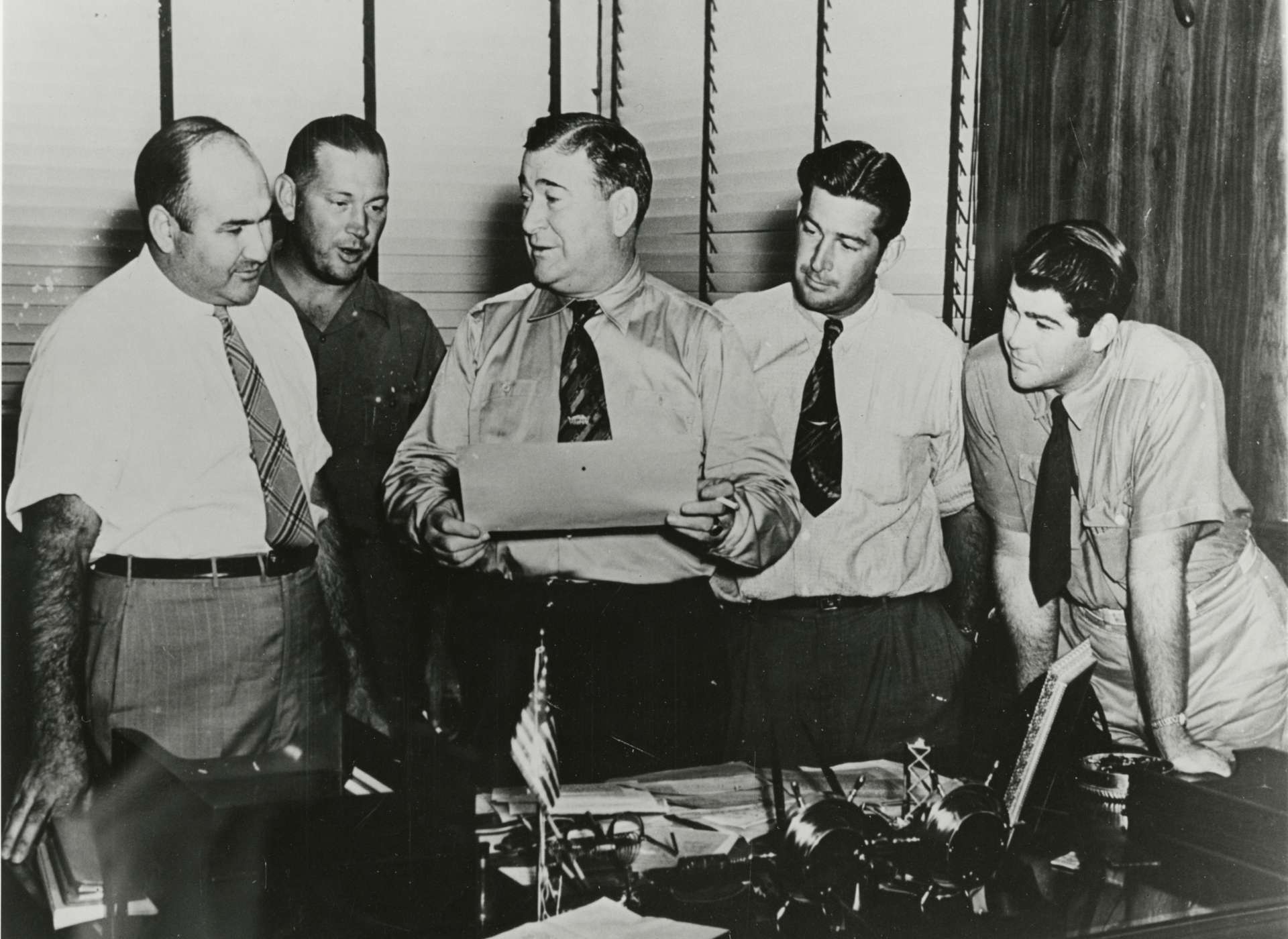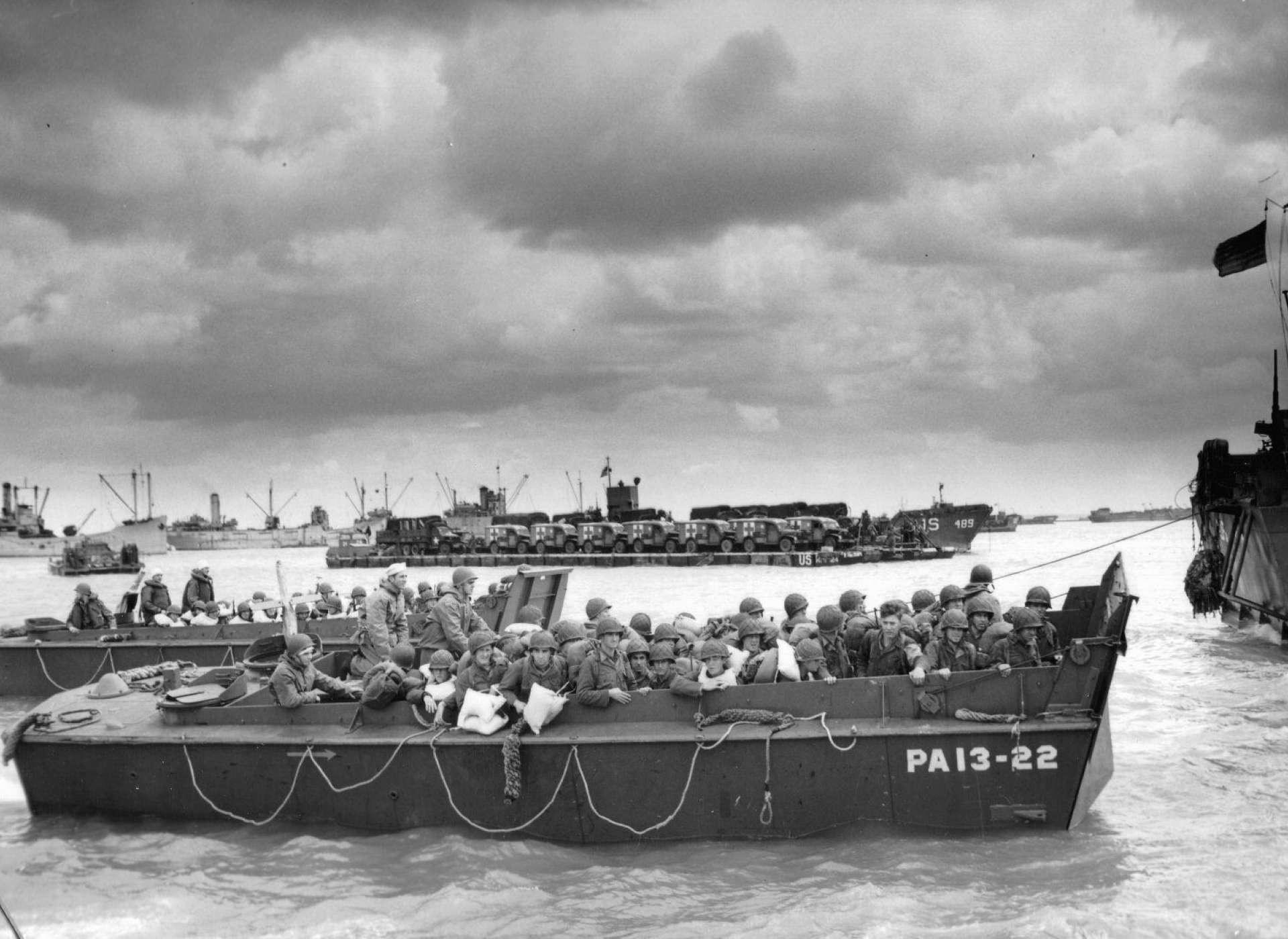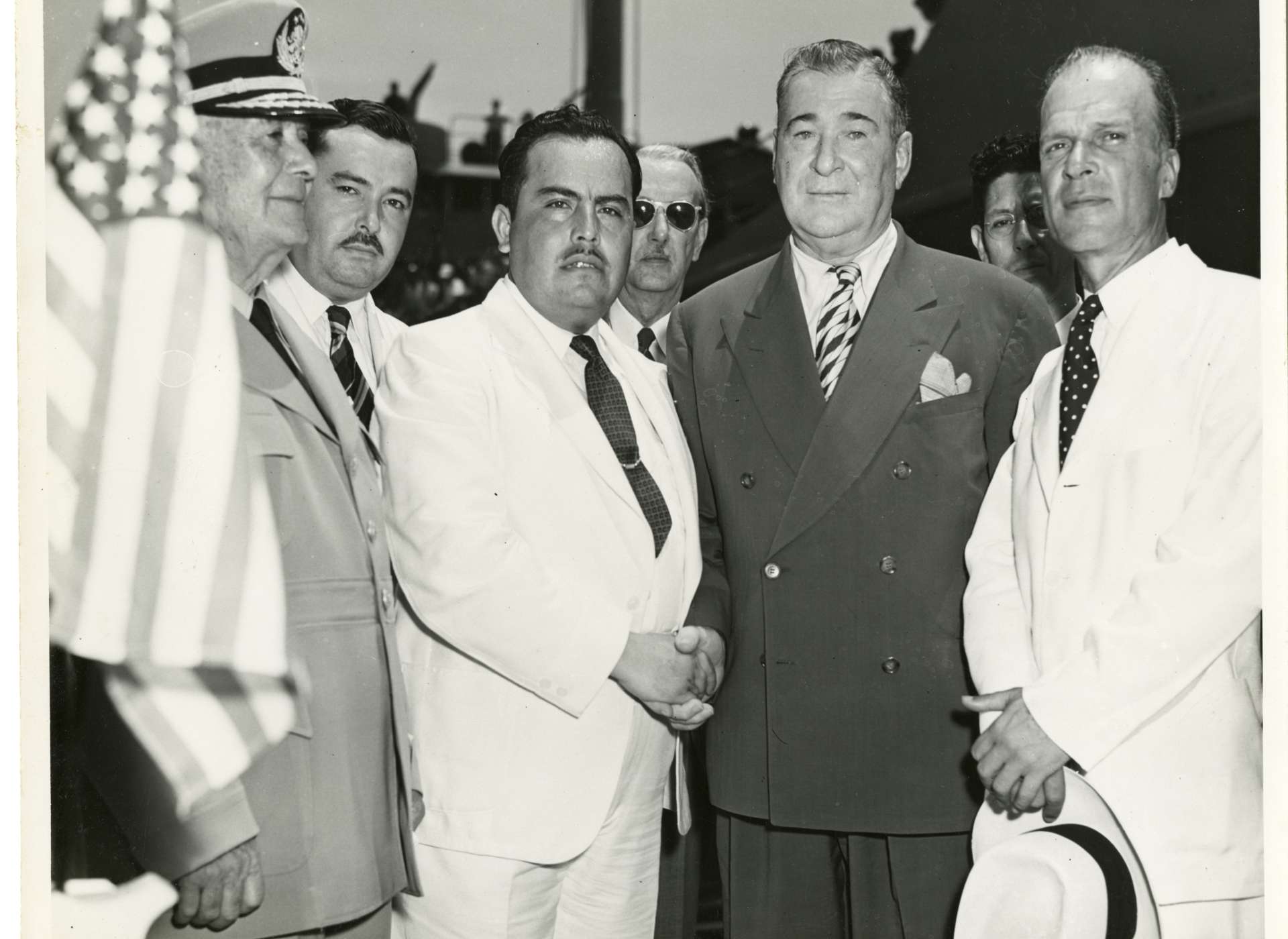Higgins Boats
In the late 1930s, the U.S. military began developing small boats that could carry troops from ships to open beaches. Andrew Jackson Higgins of New Orleans, who had been manufacturing shallow-water work boats to support oil and gas exploration in the Louisiana bayous, adapted his Eureka Boat to meet the military’s specifications for a landing craft. Designated the Landing Craft Personnel (Large), or LCP(L), it was used in the invasions of Guadalcanal and North Africa in 1942.
Initially, separate landing craft were used for troops and vehicles, the LCP(L)s and the LCVs (Landing Craft, Vehicle). The LCP(L) was designed without a ramp. Troops unloaded from the LCP(L) by jumping over the side, which proved unsatisfactory because climbing over the side exposed the men to hostile fire. Higgins solved this shortcoming by combining the LCP(L) and LCV’s designs into the Landing Craft Vehicle and Personnel or LCVP. This craft, which is now the most famous of Higgins’s designs and is often referred to as the Higgins Boat, allowed infantry or small vehicles to exit through a front ramp.
Higgins Boats changed the way that war was fought. Previously, navies would have to attack ports, which were usually heavily defended. By using Higgins Boats, armies could unload across an open beach and have more options in choosing their attack points. This also stretched the defending armies. Instead of concentrating on only a few entry points, defenders had to cover more shoreline. In both the Pacific and European Theaters of World War II, Higgins Boats allowed Allied armies to move ashore.
The success of these boats ensured that Higgins Industries would be a major employer during the War. A small workforce of only 75 workers in 1938 grew to over 20,000 by 1943. The Higgins workforce was the first in New Orleans to be racially integrated. His employees included undrafted white males, women, African Americans, the elderly and handicapped persons. All were paid equal wages according to their job rating. They responded by shattering production records, turning out more than 20,000 boats by the end of the war.
Secondary Sources
Andrew Jackson Higgins and the Boats That Won World War II by Jerry E. Strahan
U.S. Patrol Torpedo Boats in World War II, 1939-1945 by T. Garth Connelly
Building the PT Boats: An Illustrated History of U.S. Navy Torpedo Boat Construction in World War II by Frank J. Andruss
The Amphibians Are Coming! Emergence of the 'Gator Navy and its Revolutionary Landing Craft by William L. McGee
Man, Moment, Machine: Higgins Landing Craft (film) by the History Channel


